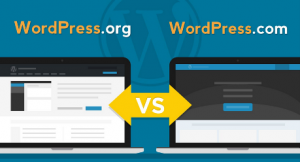By Thomas Jonas
One of the biggest challenges when you’re introducing a breakthrough product is standing out from the crowd. Deciding how to differentiate your brand just the right amount to make it distinctive—but not so much that consumers outright reject it (remember Google Glass?)—is likely the most crucial decision your company will make.
I’m the CEO of a food tech startup, but before, I was an executive for an international plastic packaging company. I didn’t feel great, to say the least, about the impact my work was ultimately having on the planet. When I shifted into the food space, where packed grocery store shelves show the high levels of competition, I saw the long road ahead. How would we get there? I knew we needed to create something fundamentally different, and we also knew that difference would drive our story and get our company off the ground. The truth is, that search for something “different” is true across all industries, from airlines to hospitality.
Here’s what I’ve learned during the yearslong process it took for us to get our product from a speck of an idea to a fully-formed vision, to excite investors and consumers. It certainly didn’t happen overnight.
Own your unique difference for the long haul
If you’re launching a product in a crowded category, you need a story that differentiates you and that you can stick to as the company grows. When Farmer’s Fridge launched in 2013, it had to stand out among rows of glowing vending machines in train stations and airports. Rather than introducing yet another healthy snack into existing machines alongside more tempting chips and cookies, the company invented an entirely new vending machine for healthy, fresh foods.
Farmer’s Fridge stayed true to that mission, and now the company has over 400 machines throughout the country, slowly changing how people understand that convenience doesn’t necessarily mean unhealthy. In that time, they didn’t change their message or their core theme of offerings. Consumers associate Farmer’s Fridge with being the healthier, convenient option. The different option.
Similarly, Airbnb had to stand out among a sea of online travel and hotel booking sites. By shaping the business around individual hosts and homes, not corporate entities in boxy buildings, they told a different story than what people expected. And since then, the platform has grown to over 7 million listings. They’ve added “experiences” and other offerings, but the power of “belonging” and human connection, remained constant.
The differentiation might also be in product naming. Uber could have used some variation of “cab” or “car” in the name but went with something unique to distance what a car service or cab might offer—and to suggest it’s doing something extra, something more than you’d expect. Now customers use “Uber” as a verb, even if they’re using Lyft or other services in the field. Again, this shows long-term thinking beyond the category you’re currently in.
The protein space has gotten crowded in recent years and is riskier to enter. One reason our investors are excited about us is because from the beginning, we chose to own our truth and call ourselves out as different from the pack. When we launched, the phrase “plant-based” was everywhere as the hot “new” trend, and we were constantly asked if that’s what we were creating. We deliberately chose not to go there.
Instead, we focused on describing our protein as what it was—a newly discovered fungi. It is not an easy sell, but it is the truth. In the short term, it means we have to do a lot of explaining about the product (Yes, it’s fungi; no, it’s not a mushroom). But in the long term, we can carve out our own space that’s not just a novelty and keep people interested. Now as sales of plant-based meats are plateauing, we’ve managed to own something uniquely different.
The lesson here is to dig deep for what is truly going to be distinctive—not just today, but also five years from now. You need to anticipate where the world is going and create a market so you end up a few steps ahead of where you are today.
Strike the right balance
The most important lesson about differentiating an innovative product, however, is knowing how to take people with you on the journey, especially in food. If your product is so out-there and unusual, it risks becoming a novelty that people buy once for fun and then forget about, like astronaut ice cream. In the case of Farmer’s Fridge, when customers walked by, they can see the clear jars of salads inside. It’s not what they’d usually expect, but it’s immediately obvious what it is. Had the containers been obscured with packaging, or included complex foods with too many ingredients, it may have been harder to get people on board.
Similarly, in a world full of cars, Tesla and Rivian introduced electric vehicles. Those products are fundamentally different from gas engine cars in every way but the aesthetic: They still look like cars. If they made octagonal spaceships with three headlights and DeLorean doors, the selling point would certainly have been more difficult. To attract consumers, their cars needed to be familiar yet enticing—just different enough. Those companies, like so many others, are not just trying to sell a product, but change human behavior, and even the planet. With such lofty goals, they still need to remain down to earth. After all, that’s where the customers live.
At Nature’s Fynd, it made sense to introduce our fungi to the world in a familiar format (e.g., breakfast sausages and cream cheese) that people instantly knew how to cook or serve. Since our mission is focused on changing how people eat, we had to create something understandable, while also encouraging them to take a leap.
If you’re invested in something truly innovative, you need to differentiate along a similar spectrum. But remember that people need a bridge to get there, or you risk losing them because they don’t recognize the product or understand how it fits into their lives. Farmer’s Fridge took a risk introducing its healthy products in its own vending machine. Uber took a risk creating a ride service platform that is recognizable, but different than taxis. At Nature’s Fynd, we shunned the “plant-based” protein moniker, creating familiar products made from microscopic fungi. “Similar but different” can be a winning formula to stand out from the crowd and grow your brand.
Thomas Jonas is the CEO of Nature’s Fynd, an alternative protein company, currently available as meatless breakfast patties and dairy-free cream cheese, with more products in the works.
(13)
Report Post







